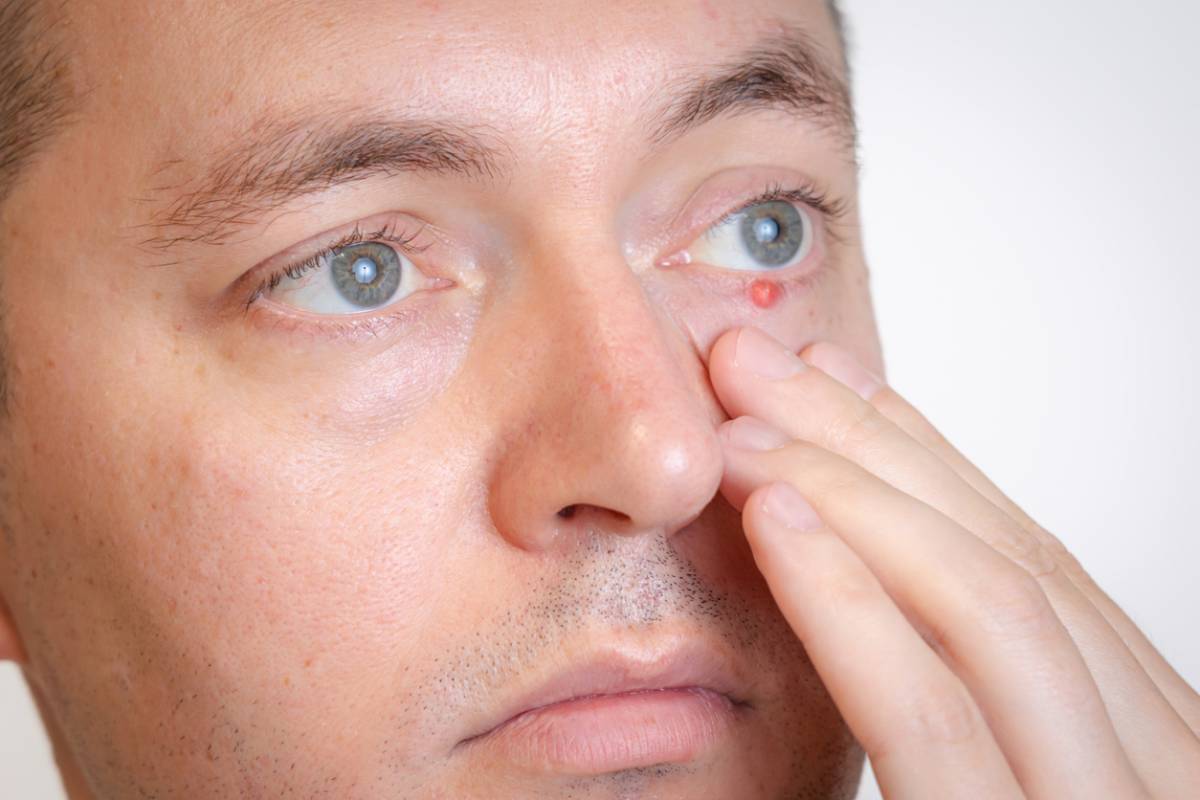Eyelid cysts and tumors are common growths that can cause concern. In instances of malignant cases, eyelid tumor reconstruction may be necessary to restore both function and appearance. You may be wondering how to distinguish an eyelid cyst from a tumor. This article explores exactly that, as well as the steps involved in diagnosis and treatment.
What is an Eyelid Cyst?
An eyelid cyst is a benign, fluid-filled sac. Common types include:
- Chalazion: Develops when a meibomian gland in the eyelid becomes blocked, leading to a firm, painless bump. Chalazia are more common than styes and are typically painless, but may cause irritation or discomfort.
- Stye: Occurs when an oil gland or hair follicle becomes infected, resulting in a red, painful lump at the eyelid edge.
While cysts are generally harmless, they can cause irritation or discomfort and may require drainage or removal if persistent.
What is an Eyelid Tumor?
An eyelid tumor is an abnormal growth of tissue that may be benign or malignant. Tumors tend to grow faster than cysts and may invade surrounding tissues if they are malignant, requiring more extensive treatment. Tumors can also result in changes to the skin color or shape of the eyelid, making them more noticeable. In some cases, reconstructive surgery is needed to restore the eyelid’s appearance and function after tumor removal.
How to Distinguish an Eyelid Cyst from a Tumor
Although cysts and tumors may look similar, there are key differences that can help distinguish them.
1. Size and Appearance
- Cyst: Eyelid cysts are generally small, round, and smooth. Chalazia are firm but painless, while styes are red and swollen. They are often less than 1 cm in size.
- Tumor: Tumors are typically larger, with irregular shapes. They may have uneven borders or signs of bleeding or ulceration, especially if malignant. Tumors tend to grow faster than cysts, making them more concerning.
2. Pain and Sensitivity
- Cyst: Cysts are usually painless unless infected. Chalazia are often painless, while styes are tender and swollen. Styes can cause discomfort, especially near the eyelash line.
- Tumor: Tumors may not cause pain initially, but they can become painful as they grow. Malignant tumors, in particular, can lead to changes in vision and eye movement, causing significant discomfort.
3. Growth Pattern
- Cyst: Cysts grow slowly and may remain stable for weeks or months. Chalazia often resolve with warm compresses, while styes may drain on their own. They generally do not spread to other areas.
- Tumor: Tumors typically grow faster than cysts and may spread to surrounding tissues. Tumors may cause symptoms like eyelid distortion, redness, or loss of eyelashes as they progress.
4. Other Symptoms
- Cyst: If a cyst becomes infected, redness, excessive tearing, or irritation may occur. A chalazion can press on the cornea, leading to blurry vision if it becomes large enough.
- Tumor: Malignant tumors may cause skin discoloration, bleeding, and changes in the eyelid’s shape. Tumors may also cause vision changes, swelling of nearby lymph nodes, and general discomfort.
Diagnostic Approach
If you notice a growth on your eyelid, it is important to seek medical attention for an accurate diagnosis. A healthcare provider will examine the lump’s size, shape, and texture to determine if it is a cyst or tumor. If necessary, imaging tests like ultrasound or MRI can assess the growth’s size and spread. In cases where the diagnosis is unclear, a biopsy may be performed to examine the tissue and determine if the growth is benign or malignant.
Treatment Options
Treatment depends on the type and size of the growth.
- Cyst Treatment: Most eyelid cysts are treated conservatively. Warm compresses can help chalazia heal, and styes typically resolve on their own. Infected cysts may require antibiotics or drainage. In some cases, surgical removal may be needed to prevent recurrence.
- Tumor Treatment: Benign tumors are usually removed surgically, while malignant tumors may require surgery, radiation, or chemotherapy. Tumors that require surgical excision may necessitate reconstructive surgery to restore the eyelid’s appearance and function. The specific procedure will depend on the location, size, and type of the tumor. Early detection is key to a successful outcome.
Oculoplastic Surgery in Colorado
Eyelid cysts and tumors both present as bumps on the eyelid but differ significantly in their causes, appearance, and treatment. Cysts are typically benign and can be treated conservatively, while tumors, especially malignant ones, require more extensive care. If you notice any unusual growth, it is essential to seek medical advice for an accurate diagnosis and appropriate treatment to avoid complications. Stop by for a consultation at our oculoplastic surgery clinic today, and you will be in great hands.



